Instrumentation - Department of Chemistry
Fluorescence Spectrophotometer (Fluorimeter)
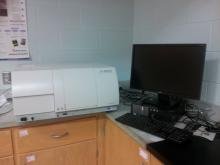
Hitachi F-4500
A fluorimeter measures the intensity and wavelength of emission spectrum after a sample has been photoexcited. The data are used to identify the presence and amount of specific molecules present in sample. In addition to fluorescence (fast emission), both phosphorescence (slow emission) and luminescence (light emission caused by a process other than heating) can be measured with this instrument. The high energy throughput and excellent signal to noise ratio of this instrument allows measurements of chemiluminescent and bioluminescent compounds.
Atomic Absorption Spectrophotometer (AA)
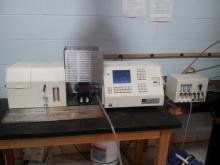
Buck Scientific 210 VGP
Atomic Absorption is primarily used to determine the concentrations of elements at very low levels in solution and it is particularly useful for metallic elements, such as copper and lead. A very hot flame is used to break molecules into individual atoms and then a single type of atom is detected using a special lamp system. All operating conditions are pre-loaded in the internal computer, including lamp settings, secondary wavelengths, and alternate methods of analysis for over 60 elements by flame, furnace, or hydride techniques. The three lamp turret has individual controls for alignment and standby mode to keep lamps warm.
High-Performance Liquid Chromatography System (HPLC)

Waters 2685 HPLC System with the Waters 2487 HPLC Absorbance UV-Vis Detector
High-performance liquid chromatography separates components in a liquid solution, identifies each component and quantifies each component of a sample in analytical environments such as food safety, forensics, research and development, quality control and chemistry and pharmaceutical laboratories.
Fourier Transform Infrared Spectrometer (FT-IR)
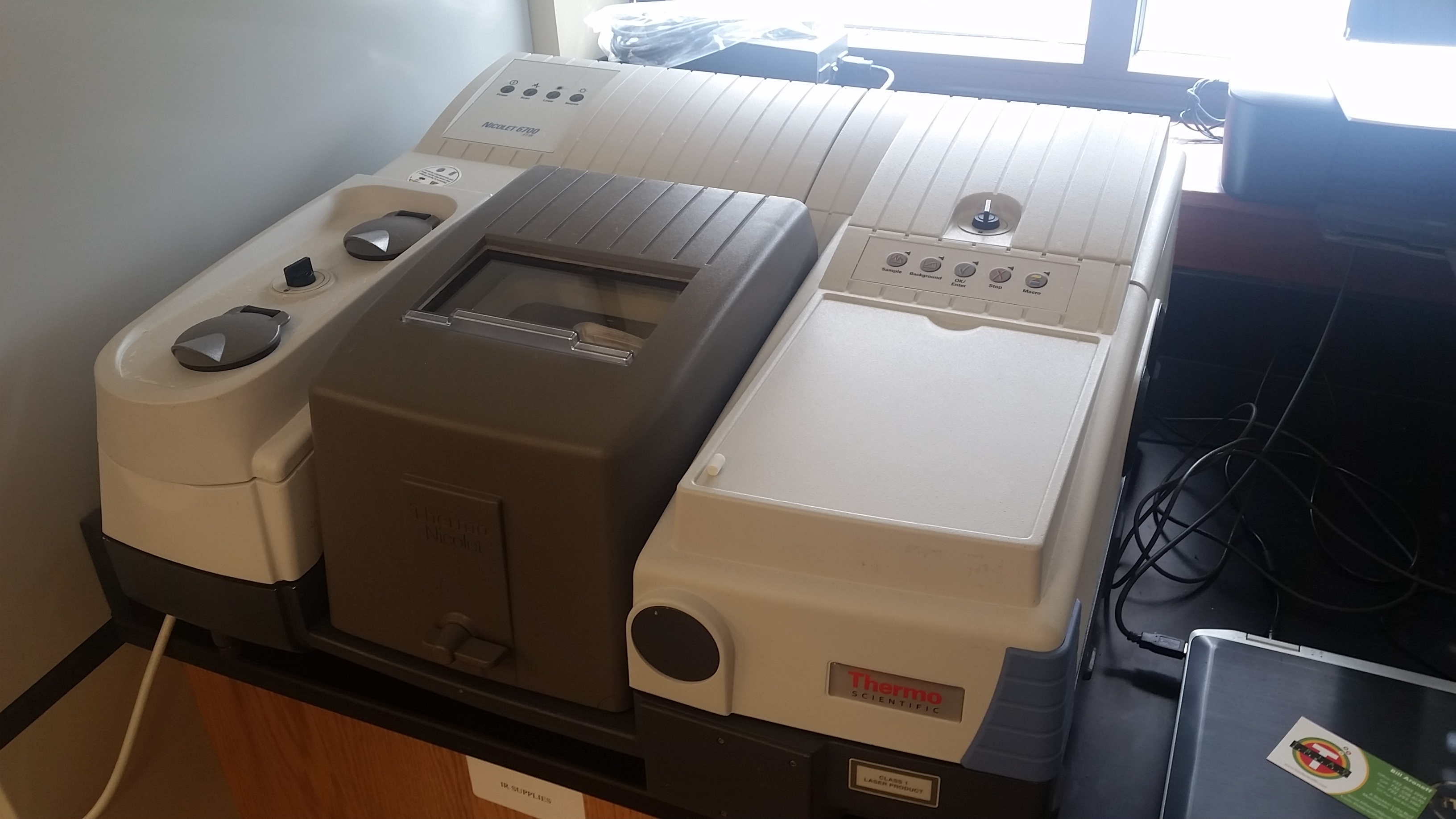
Nicolet 6700 FT-IR Spectrometer from Thermo Scientific
FTIR produces an infrared spectrum of absorption, emission, photoconductivity or Raman scattering of a solid, liquid or gas via a mathematical process called Fourier transformation.
Ultraviolet-Visible Spectrophotometer (UV/Vis)
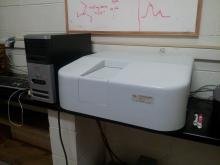
TU-1901
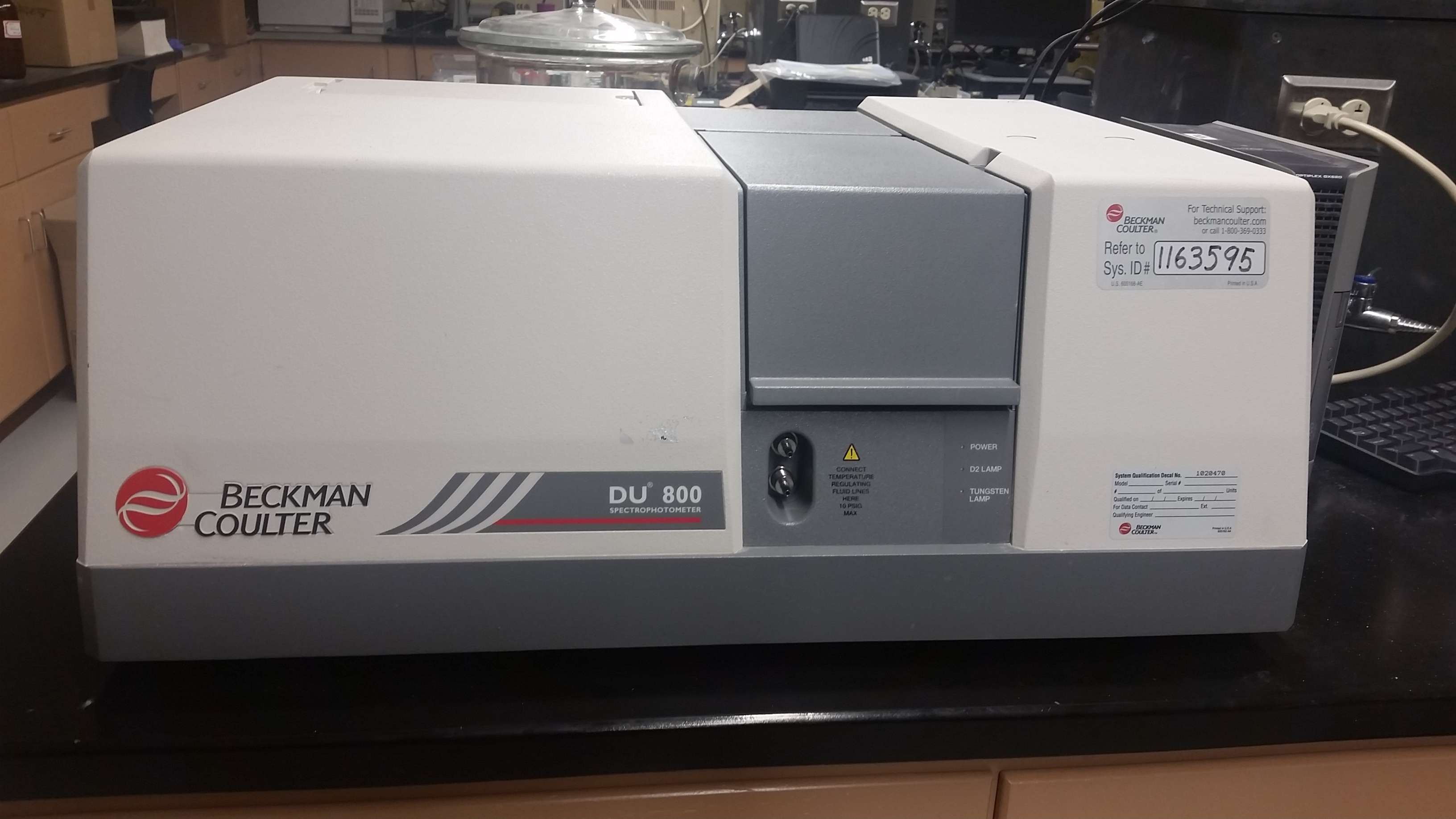
Beckman Coulter DU 800
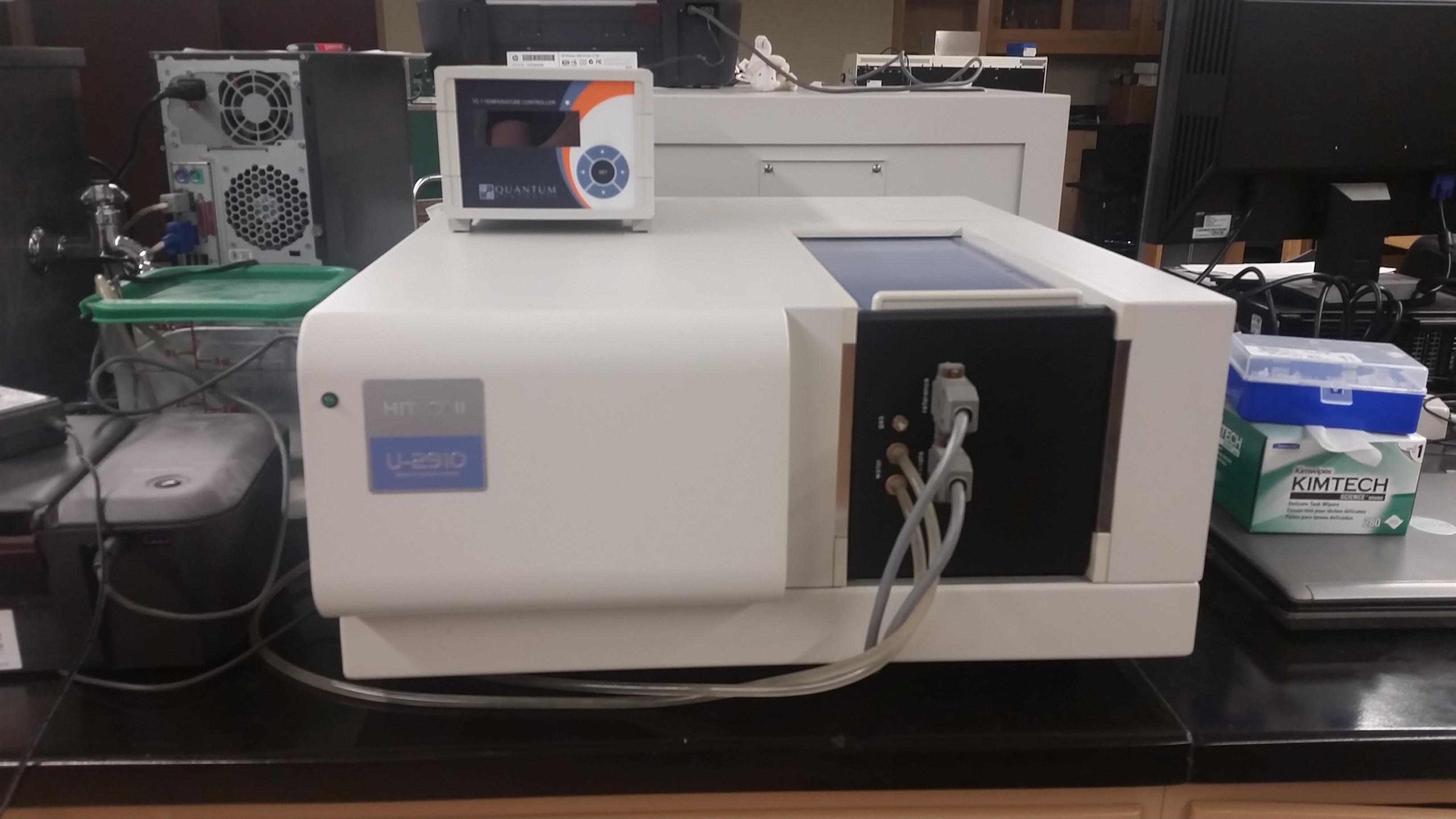
Hitachi U-2910 with Quantum Northwest Temperature Controller
UV/Vis spectroscopy is used for the quantitative and qualitative analysis of various analytes ranging from transition metal ions, conjugated organic compounds and biological macromolecules. Analysis is commonly conducted in solutions, but solids and gases can also be studied. This method is used in many scientific fields such as organic chemistry, biochemistry, pharmaceutical analysis, food testing, pharmaceuticals, environmental protection and the life sciences.
Gas Chromatograph (GC)
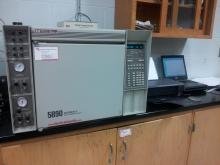
Hewlett Packard 5890 Series II
Gas chromatography is a common type of chromatography used in analytical chemistry for separating and analyzing compounds that can be vaporized without decomposition. Typical uses of GC include testing the purity of a particular substance, or separating the different components of a mixture (the relative amounts of such components can also be determined).
Nuclear Magnetic Resonance Spectrometer (NMR)
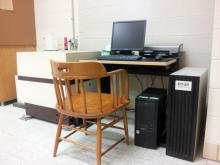
Anasazi EM-360
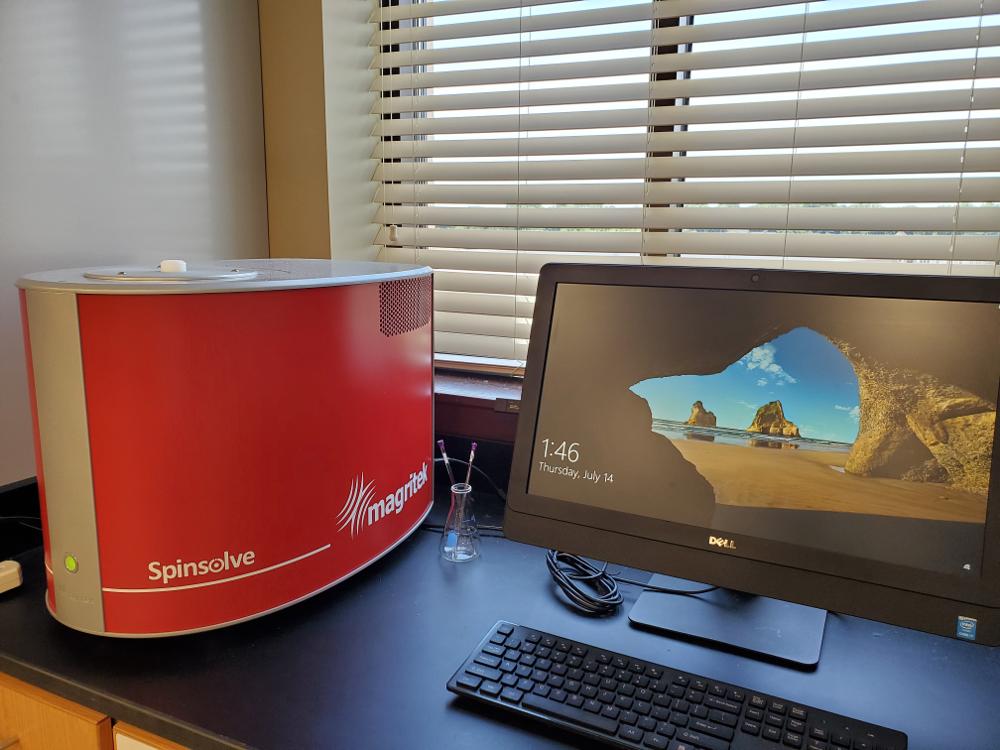
Magritek Spinsolve 43 MHz
Nuclear magnetic resonance occurs when nuclei in a magnetic field absorb and re-emit electromagnetic radiation. NMR data are used to study physical, chemical and biological properties of matter. This 60 MHz Proton NMR spectrometer provides a way to introduce students to modern FT-NMR spectrometry. The "NUTS" software permits advanced NMR data processing. The instrument provides excellent low-field proton spectra of organic compounds. Relaxation time measurements and two-dimensional COSY (COrrelated SpectroscopY) experiments can also be performed.
Mass Spectrometer (MS)
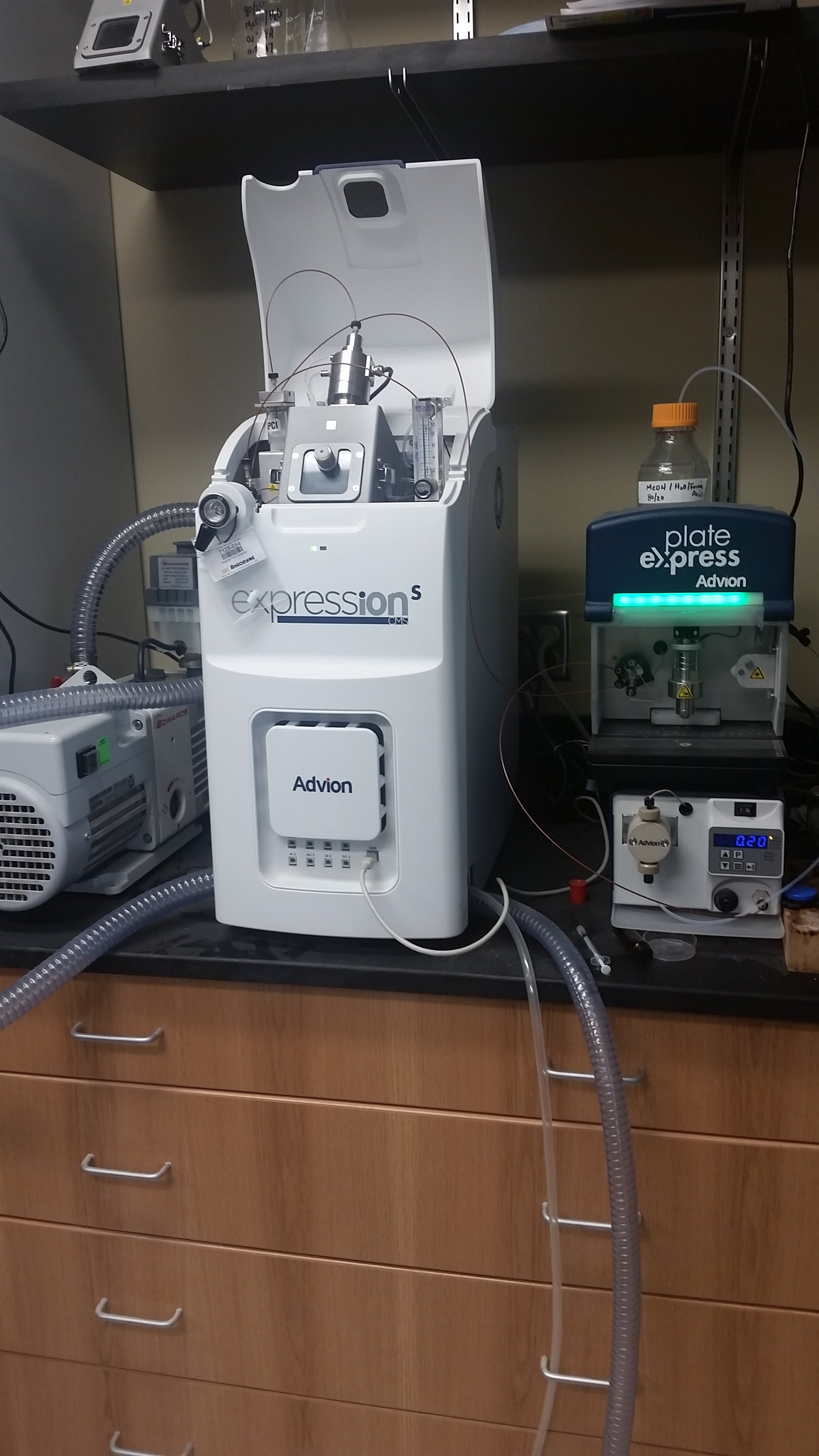
Advion expression CMS (compact MS) with the Plate Express
Mass spectrometry is an analytical technique applied to a solid, liquid or gas sample. The sample is ionized by bombarding it with electrons, which causes some of the sample's molecules to break up into charged fragments or simply become charged without fragmenting. These ions are then separated according to their mass-to-charge ratio. The atoms or molecules in the sample can be identified by correlating known masses to the identified masses.

